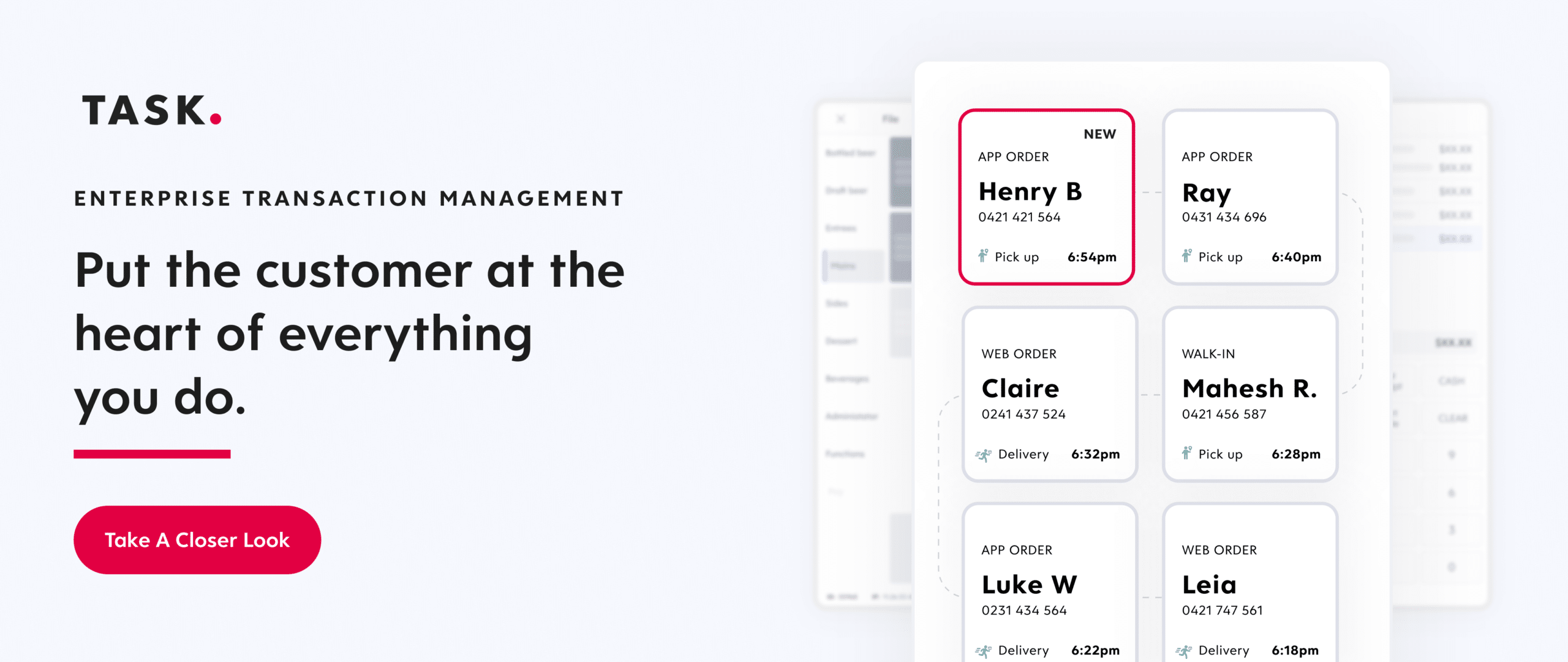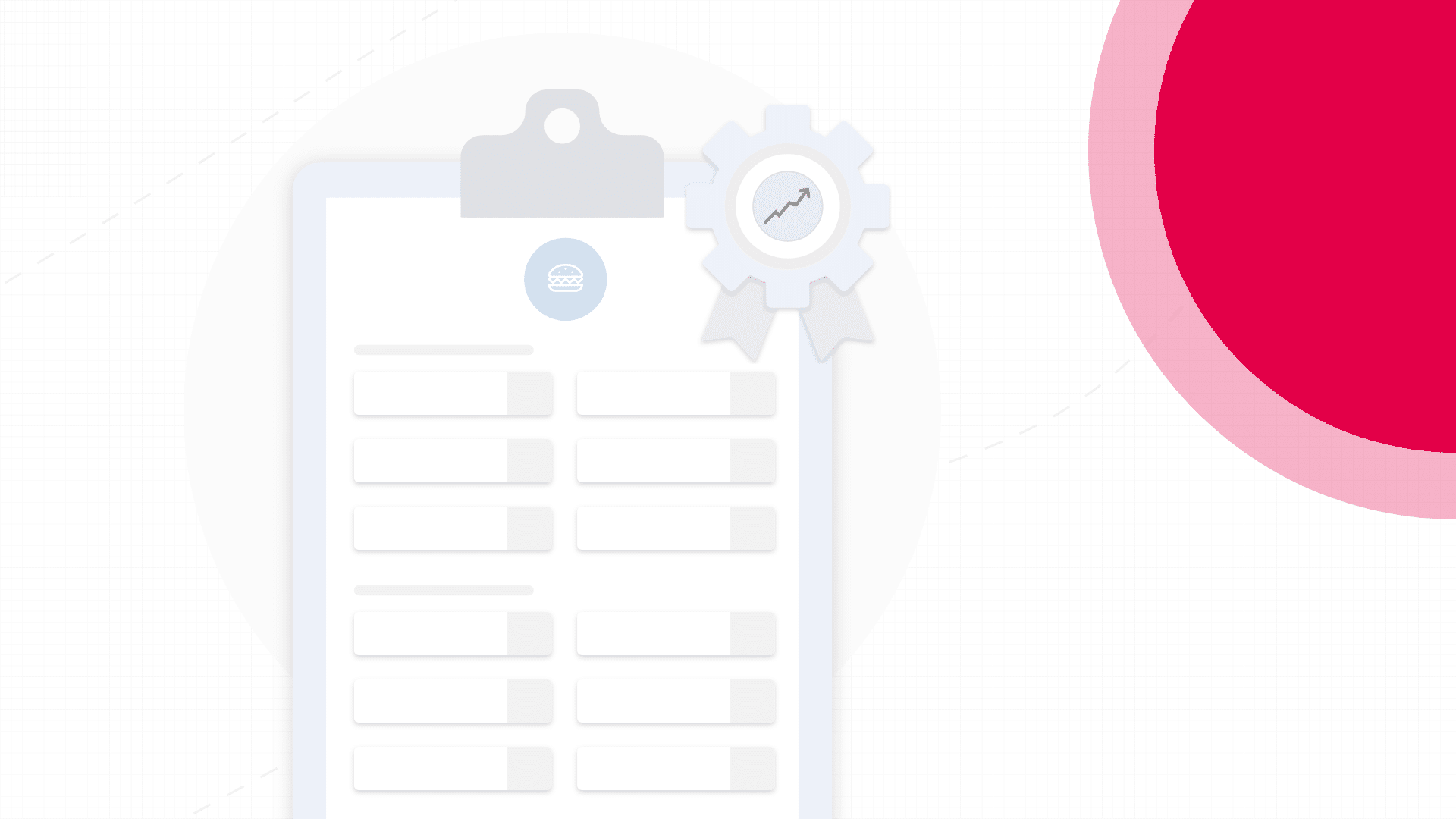From QSRs to single-location restaurants, businesses across the board are turning to digital menus and online ordering platforms. When designed well, they’re easier for customers to use and understand, they make for a faster ordering process, and they give businesses limitless potential when it comes to marketing and personalization. Menu engineering is opening huge opportunities to strategically design your ordering touchpoints to drive higher sales and better guest experiences.
Here’s how to approach menu optimization to boost efficiency and promote overall growth for your restaurant.
What is Menu Optimization?
Menu optimization is all about strategically aligning your marketing, layout, design, and pricing in your digital menu to both drive higher order sizes and create the best experience possible for your customers. Optimized menus consider everything about how customers behave and interact with digital menus and use these insights to better opportunities for upselling items. When they are designed well, optimized menus incorporate personalization and customer data to increase sales, speed up the ordering process, and improve customer satisfaction rates.
Why should restaurants put effort into engineering their menu?
Staying ahead in the cutthroat restaurant market is requiring businesses to carve out better efficiencies across their entire operation. And with services like mobile-ahead ordering rising in popularity by up to 57 percent every year, having a seamless and engaging digital menu and ordering system is crucial.
Menu engineering ultimately means more output for restaurants and faster, more in-tune service for customers. Menu engineering not only helps streamline the ordering process and ensure that guests have the chance to customize their meals, but it also allows businesses the chance to weed out underperforming items and promote more effective order suggestions.
Restaurants that prioritize menu optimization are better situated to stay strategically aligned with their customers, delivering them top value and increasing their revenue at the same time.
Get More Out of Your Inventory Management Software
What’s your strategy for deploying inventory management software? Discover the power of this essential digital tool – and how to leverage it better.
The key challenges of menu optimization
As with any customer-facing digital platform, restaurants should always first consider how a new system will affect the consumer experience of their brand. Starting with a solid knowledge base of your guest’s needs and preferences will ensure a menu that works in the market. For an effective and branded flow, menu engineers need to think through every detail including:
- Core design
- Language and messaging
- Pricing
- Imagery and branding
- Layout and design
- Customer journey and the flow of the platform
Beyond just the strategic menu placement and marketing decisions, restaurants often meet challenges when it comes to connecting their menu with their kitchen. Ensuring that the promise made in a menu can be executed to perfection in the kitchen and that your back-of-house staff can support your order volume, is essential as you approach your transformation.
Trevor Dee, TASK’s Vice President of US Business Development explains, “The key to a successful transition is having interconnected touchpoints and total control over your entire operation. Optimization requires you to look at how everything is related and make sure that your kitchen, your staff, and everything else is ready to move forward at higher capacities.”
How Can Restaurants Optimize Menus for Maximizing Profits?
If you’re looking to maximize your digital menu platform for higher sales and larger orders, then there are a few key pieces to understand about menu optimization. Here are the most important things to consider as you approach strategic engineering.
Get to Know Your Guests
This step cannot be underestimated. As John Laporte, TASK’s US President, lays out, “What’s right for you and what’s right for the guy across the street may be different. It’s about what your customer says. We look at tech and how to leverage it, but the end game has to be customer service. It has to be in line with your brand and reflect who you are.”
Customer data, including demographics, psychographics, and behavioral, as well as spending history, should all be looked at carefully to uncover exactly who your customers are and what they care about. This is where guest feedback can also be incredibly valuable and help you shape a better ordering experience for your customers through menu engineering.[1]
Understand What Competitors Are Doing
Just because someone else is doing something doesn’t make it the right choice – but it is important to understand how your offerings sit in relation to the rest of the market. Looking at competitor’s menus, and how they approach offers such as customization, order flexibility, and presentation should give you a benchmark of what customers are likely expecting to see from your brand. From there, it’s up to your business to exceed those expectations and deliver a seamless, value-driven experience.
Align your menu with your insights
It’s essential to pinpoint exactly what dishes are (or aren’t) aligning with your brand, with the target segment being served, and with your customer expectations. Looking at performance history – and not being afraid to make changes when they are warranted – is crucial to a menu that thoughtfully reflects the current demands and ongoing fluctuations in customer preferences.
Identify Items that Could Drive Immense Profits
Ask yourself what dishes are the biggest contributors to your revenue growth. As you look for opportunities to create standout menu items that can take the lead against competition, be sure to consider how this item stacks up when it comes to profitability and revenue potential. Menu engineering should ultimately encourage increased purchase rates for high-hitting items that will move up your bottom line.
Strategize to Eliminate Underperforming Items
To stay relevant, it’s important to retire systems or offerings that aren’t working and lean into the ones that are driving results. The challenge for a lot of brands is the process of identifying exactly what is or isn’t contributing to your success, and that’s where Trevor encourages brands to leverage a fully interconnected, end-to-end technology platform to uncover insights.
“We can actually see day-to-day where the check average increases are, what campaigns are working, and which items aren’t performing well,” says Trevor. “We know why someone isn’t adding a certain item to their order at a kiosk, and figure out at what point customers are making purchasing decisions.”
Get Down to the Nitty-Gritty of Pricing
When it comes to pricing, you can’t ignore the details. With cost comparisons at the customer’s fingertips, it’s essential to stay competitive while also ensuring that you are maximizing your revenue wherever possible. Consider these factors when setting prices:
- Direct costs
- Indirect costs
- Service and operational costs
- Competitor pricing
- Cost of ingredients and potential fluctuations in stock prices
- Taxes
- Ideal gross profit margin
One of the benefits of using digital menus is that you can change listed prices across all your touchpoints in real-time.
Beat Your Competition With Next-Level Digital Capabilities
Unlock the power of digital capabilities to deliver competitive customer service.
Mirror your branding with a well-designed layout
Remember that branding is about so much more than just a few colors and a logo. Every piece of your operation, from your ordering platform to your packaging, should reflect your brand’s personality and who you are to the customer.
John says, “Customers identify with restaurants that have personality. If you look at businesses like Black Bear Restaurant or Lazy Dog, you see huge success by bringing their personality to the forefront of the customer experience. With absolutely everything you put out there, you need to make sure it speaks to your brand. It has to be consistent.”
When it comes to your menu layout and design, start by ensuring a consistent and familiar branded feel across your menu, including your typeface, spacing, imagery, sizing, and flow. Each moment your customer spends interacting with any touchpoint, including your menu, should feel completely soaked in your brand, your vision, and your recognizable customer service.
Perform A/B Testing
As with any piece of technology, your digital menu should be in a constant state of testing, revision, and improvement. The most accurate testing should compare changes against a control, and go through multiple small test groups before being released across your enterprise.
Create an ongoing process to track your findings, collect feedback, and build on any previously collected learnings. Looking at metrics such as conversion rates, order size increases, the rate of abandoned carts, and overall sales will help you determine what kind of modifications you should implement next.
Keep Analytics at the Center
Everything you do in your digital transformation should be actively tracked and monitored. Gathering information and leveraging data across your entire digital ecosystem will help you get a clearer understanding of how you are performing and what initiatives are contributing to your success.
Leverage an end-to-end platform to handle menu optimization
“What we keep hearing is that businesses need a uniform digital solution that allows them every functionality in one place,” says John, “And that is what we offer at TASK.”
Menu optimization depends on accurate data and robust analysis, which requires having a fully synchronous and connected digital framework. As an end-to-end solution, the TASK digital ecosystem solution offers a single source of truth, collecting information in real-time across all touchpoints.
When done properly, menu optimization offers hospitality businesses the opportunity to drive higher sales, larger order sizes, better guest experiences, and operational efficiency. But to make the most of these benefits, you first need a technology stack that is fully integrated and can be scaled and customized alongside your business.

